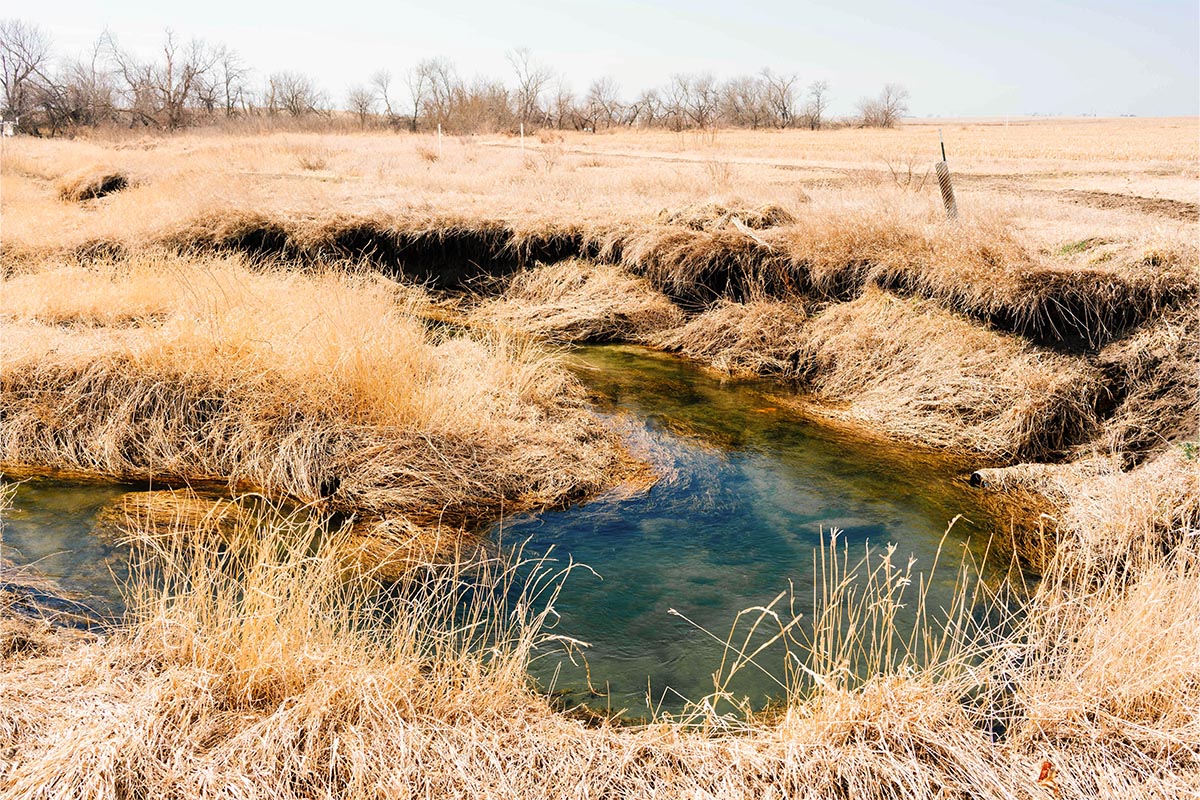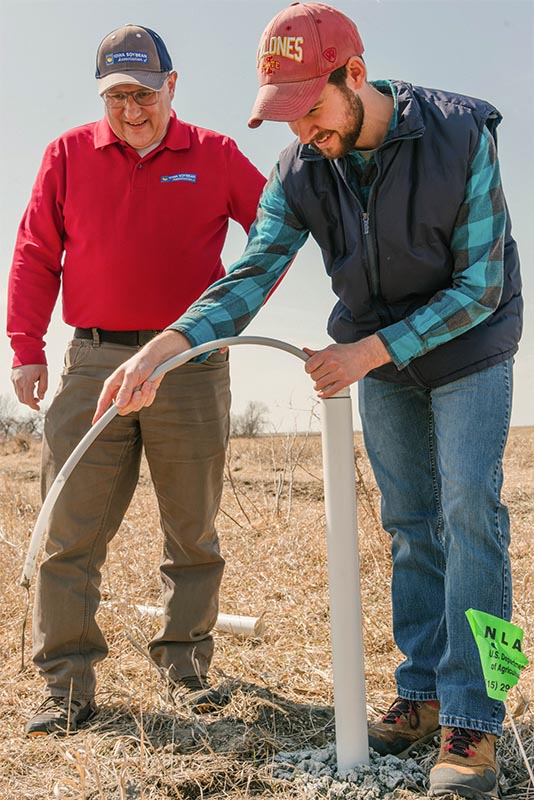
(Photo: Joseph Hopper/Iowa Soybean Association)
International Drainage Symposium comes to Iowa
February 7, 2023
In November 2022, planet Earth reached a total population of more than 8 billion people. It’s an astounding number. While the total number of people on the planet has continued to trend higher, the total amount of land used for agriculture in the United States has trended the opposite way in the last 50 years. Iowa soybean farmers and farmers across the country are producing more than ever before on the land. One of the key factors is drainage.
Agricultural land drainage dates back thousands of years — many times being an ignored, underrated part of farming. The first farmer to utilize drainage tile in the United States, John Johnston of Seneca County, New York, was laughed at and ridiculed by his neighbors back in 1838. That was until they heard about the new yields on his formerly unproductive ground. Things have changed since then.
In 1965, the American Society of Agricultural Engineers met in Chicago for its first specialty conference on drainage, where agriculture’s best and brightest discussed things like the new corrugated-wall plastic drainage, which would mark the current era of ag drainage in America. Today, nearly one-third of all agricultural land has drainage on it, and it represents some of the most productive land.
But it’s not without challenges — nutrient loss has become a hot topic in an increasingly climate-concerned world. Luckily, the drainage meetings first held in 1965 continue to bring agriculture’s brightest scientists and engineers together every five to six years for the International Drainage Symposium to discuss the latest advancements in drainage and look to the future.
An Iowa first
Last summer, the 11th International Drainage Symposium came to Iowa for the first time and was co-chaired by Iowa Soybean Association Senior Research Scientist Dr. Chris Hay and Iowa State University’s Dr. Matt Helmers. Hay says Iowa was a prime location to discuss ag drainage.
“Iowa is certainly one of the leaders in the U.S., which is trying to address nutrient reduction and edge-of-field practices,” Hay says. “We have the most bioreactors and saturated buffers of any of the states in the Midwest, and we’re a leader of nutrient treatment wetlands.
“We can contrast our voluntary approach with that of European countries who are on a regulatory system. Both approaches have had its own issues, some things that have worked well and some that haven’t worked as well. Getting together internationally with different people working with various systems and geographies is great because we can share our successes and lessons learned.”
More than 200 people attended the 11th International Drainage Symposium, representing 23 states and 11 countries. There were 104 scientific presentations; the symposium’s theme was, “Advancing drainage to meet a changing climate.”
“The theme of the symposium reflected both the physical climate and weather, and the changing political and social climate around drainage and water quality,” Hay says.
During a panel discussion, representatives from academia and industry, drainage contractors and practitioners, and a climatologist discussed some of the changes to climate and the impact on drainage. A drainage contractor from England shared his experience working in the U.K. He also connected what he learned studying drainage in a number of countries during his time as a Nuffield Scholar.
Charolette Kjaergaard, with NovaDrain Aps of Denmark, also addressed the audience. She helped develop Denmark’s national strategy for drainage edge-of-field practices.
“It was an interesting comparison to the U.S. and other countries as we all struggle with how best to meet our nutrient reduction goals,” Hay says.
The group of scientists spent part of the symposium touring Hay’s and Helmers’ ongoing multi-year research into drainage water recycling in Iowa.
“In a nutshell, the system captures drainage water in the spring and stores it, so we’re capturing water when we’ve got too much and reusing it as supplemental in the summer when we can often use more,” Hay says. “It gives us multiple benefits, including crops benefit from supplemental irrigation, which gives farmers greater and more consistent yields and resilience during drought periods.”
Hay adds, “From a public benefit view, we also have water quality benefits. We’re recycling water and nutrients that would have otherwise gone downstream.”
After years of preparation and planning through a pandemic, and then finally putting a successful symposium in the books, Hay says he’s thankful.
“To have great attendance with a lot of positive feedback and success from the symposium shows people were happy to be back together and to catch up with colleagues,” He says. "Being able to see and hear what everyone’s been doing and to learn from each other is gratifying.”
Back